ExxonMobil is constructing a gravity-based structure (GBS) for the Hebron offshore oil platform at a deepwater site off the coast of Newfoundland and Labrador, while the topside deck is being built at the Bull Arm fabrication site.
"The next slip form operation is underway at the deepwater site. This will raise the GBS height another 44 metres to approximately 71 metres. Next year we will take it up to its full height of 122 metres," said Lynn Evans, ExxonMobil Canada public and government affairs advisor.
"Mechanical outfitting will also be a key activity at the deep water site and it is expected to continue for the next year or so until the GBS is ready for mating with the topsides."
Construction of the $14 billion Hebron project is currently taking place at a deepwater site at Bull Arm, which includes laydown and docking facilities at a water depth of 150 to 180 metres.
The construction method used for vertical structures like gravity based structures is called slip forming. This is a process in which concrete is poured into a continuously moving form for 24 hours a day and seven days a week.
"The slip form itself is prefabricated in elements and connected and installed on site," said Evans.
"The thickness of the concrete can be manipulated and accommodations can be made for block outs or required openings in the wall structure."
The utilities and process module (UPM) and derrick equipment set are being built in South Korea. All modules will be assembled on the integration pier at the Bull Arm site, which is Atlantic Canada’s largest industrial fabrication site. It is located 150 kilometres from Newfoundland and Labrador’s capital of St. John’s.
The site is fully leased by ExxonMobil from Nalcor for the construction of the GBS, fabrication of the living quarters and GBS and Topsides installation and integration activities for the project. The GBS will contain 52 slots for drilling wells and the capacity for 1.2 million barrels of oil storage. The platform is being designed for an oil production rate of 150,000 barrels of oil per day. The first oil is on schedule to be produced before the end of 2017.
In order to get the UPM to the deepwater site, the UPM will be skidded onto the finger pier. All other modules will be put into position at the quay next to the finger pier. Then the living quarters, drilling support module, derrick equipment, helideck, life boat stations and flare boom module will be moved, skidded, lifted and installed onto the UPM structure.
"After the topsides integration is completed, two barges with towing fleets will lift the topsides off the pier and bring it to the deepwater site at Bull Arm," said Evans.
"The deepwater site is where construction of the GBS will be completed. The topsides will be floated over top of the GBS and the GBS will then be de-ballasted to take up the topsides on its four main support points."
Evans said the topsides and GBS will then be interconnected including risers, J-tubes and various seawater and crude caissons. Once completed, the platform will be ready to be towed about 350 km to the Hebron offshore field.The project reached a significant milestone in July 2014, when the GBS was towed from the dry dock at Bull Arm to the deepwater construction site. Initially, the GBS was slip formed to a height of 27.5 metres.
Winches were used to move the GBS out of the dry dock. Six tugs boats towed the GBS almost three kilometres on July 22. The GBS arrived at the deep water site about 10 hours later.
Construction of the GBS started at the Bull Arm fabrication site in the fourth quarter of 2012, with the placement of steel skirts.
Welded together into one continuous piece, the steel skirts improve the stability of the GBS on the sea bed. Crews placed the first 10 tons of steel in the bottom layer of the base slab and started pouring concrete.
There is about 22,000 cubic metres of concrete in the base slab. Next, the centre shaft, storage cells, ice walls, and cantilever wall were constructed.
The total number of people employed on the Hebron project as of June 30, 2014 was about 8,000 of which almost two-thirds are Newfoundland and Labrador residents.
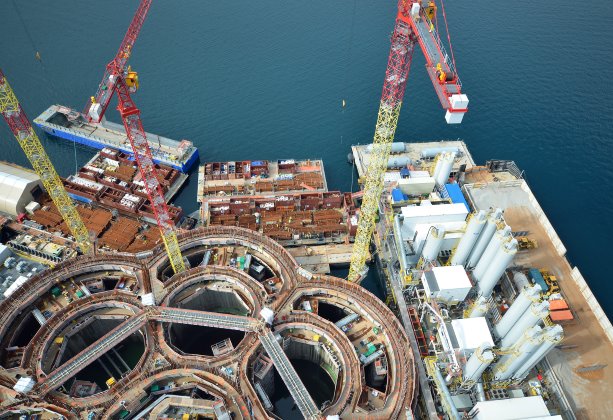
1/2
Photo: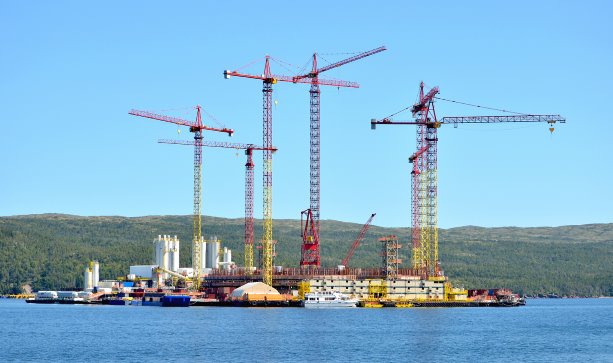




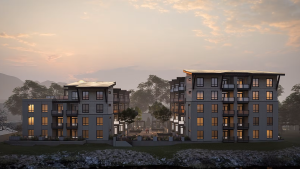


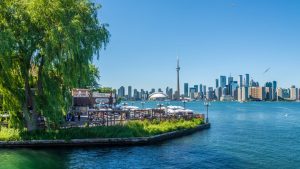
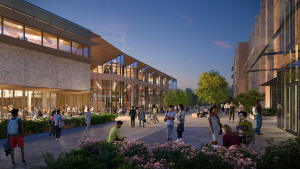


Recent Comments
comments for this post are closed